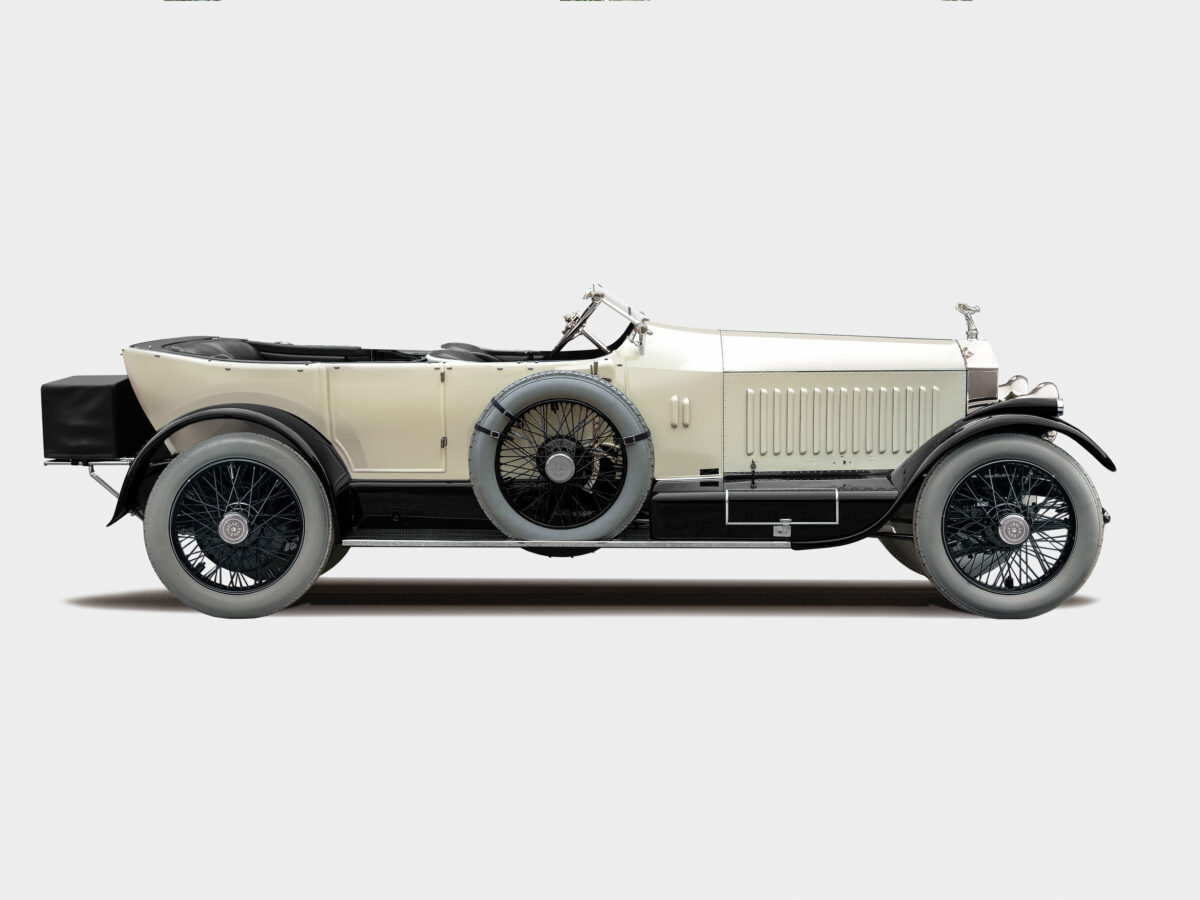Rolls-Royce – Silver Ghost (1914)
Details
- Vehicle Type:
- Torpedo Grand Luxe
- Coach Builder:
- Van den Plas
- Cylinders:
- Inline 6
- Engine CC:
- 7428
- Entrant
- Terence George Bramall (UK)
Classe C

The Rolls-Royce 40/50 H.P. powered by its seven-litre six-cylinder engine was one of the most technically progressive cars in the world. The ride was incredibly smooth and silent back in the day and the handling was virtually effortless. This superlative vehicle was first exhibited at London’s Olympia Show in 1906. The name Rolls-Royce Silver Ghost originally referred to a single example. In April 1907, a chassis with a Barker Tourer body finished in silver was completed and given the appellation “The Silver Ghost”. Rolls-Royce’s legendary moniker “The Best Car in the World” can be traced back to an advertisement in an issue of ‘The Times’ from 13th November 1908: “In July, Lord Montagu declared that THE SIX-CYLINDER ROLLS-ROYCE was the BEST CAR IN THE WORLD.” This is the first known instance of those immortal words being seen in print. The model that really established the reputation of the 40/50 H.P. was the ‘London-to-Edinburgh’ chassis. In 1911, Rolls-Royce set out to beat Napier’s London to Edinburgh record for speed and fuel economy. In order to achieve its objective, the company developed a car styled with a highly minimalistic body, a bigger carburettor, higher compression and a string of other exciting details. The result was to set a successful new record. All the way from London to Edinburgh, the car was driven only in top gear. This London-to-Edinburgh chassis was finished in March 1914 and subsequently shipped to Van den Plas Coachbuilders in Belgium. It was fitted with a revolutionary Torpedo Grand Luxe body featuring a full disappearing-hood configuration and a seamless one-piece aluminium body. The car boasts rear armchair seating, along with the complete silver and glassware set supplied when the car bade farewell at the factory gates. This unique example is the last surviving Silver Ghost from before the First World War to have a body styled by Van den Plas.
